
Powerlifting is a journey to making your body really strong! But this strength doesn’t happen overnight. You may wonder how powerlifters are able to lift so much weight without getting injured? You may be thinking that powerlifters must spend hours in a gym to be able to lift those weights. The answers is simple, consistency and progressive overload. In this article we are going to be taking a look at what is progressive overload and how it works to not only make powerlifters strong but to keep them away from injury.
Progressive overload is the ultimate driver to muscle adaptation and it refers to the gradual progression of stimulus over a period of time to lead to muscle adaptations. The body requires a somewhat challenging stimulus before it is given time to recover and adapt by getting stronger.
Progressions in training sessions may be a steady increase in the loads used for strength training, an increase in the number of repetitions or sets moving the same load, increases in training volume, or simply an ability to move the same load better each session. It is important to remember that progressive overload does not always mean that you must increase the load lifted each session.
Now we talk about how you can use progressive overload to work towards your strength training goals:
Option 1: a safe and steady increase in the load/weight used during your training
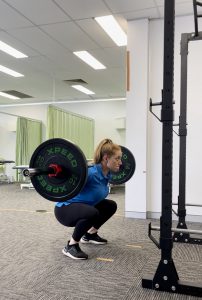
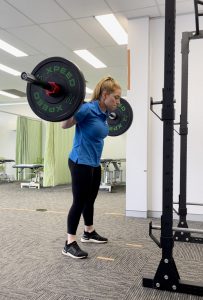 Let’s consider the squat. During the session in which you perform your squats you may begin by warming up to a comfortable weight and working through your usual sets and repetitions.
Let’s consider the squat. During the session in which you perform your squats you may begin by warming up to a comfortable weight and working through your usual sets and repetitions.
Once you have become comfortable moving this load over the set number of repetitions you may incorporate progressive overload by increasing the weight by 2.5-5% and moving that weight for the same number of repetitions.
Remember to use a weight that you can safely move and the recommendation is to increase the weight by 2.5-5% only to avoid overloading.
For example:
Starting squat weight: 50kg for 3 sets of 5 reps
Increase to 52.5kg (+5%) for 3 sets of 5 reps
Option 2: increasing the number of repetitions or sets
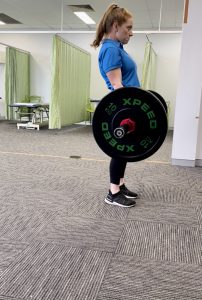
 Progressive overload can also be used by increasing the number of repetitions when moving the same load.
Progressive overload can also be used by increasing the number of repetitions when moving the same load.
The number of repetitions increased may be minimal, as low as increasing the set by 1 rep, but this will allow you to increase your strength by training at higher volumes rather than higher loads.
For example:
Starting deadlift weight: 80kg for 3 sets of 4 reps
Increase to 80kg for 3 sets of 5 reps (increase in reps)
Or for 4 sets of 4 reps (increasing by a set)
Option 3: improving the quality of your movement
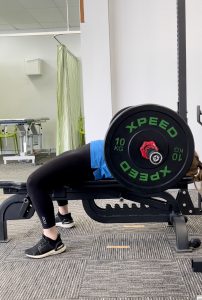
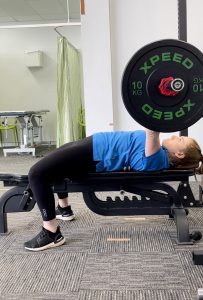 Eventually during your strength journey, you are going to get to a stage where you are unable to steadily increase the load or the number of repetitions used during training.
Eventually during your strength journey, you are going to get to a stage where you are unable to steadily increase the load or the number of repetitions used during training.
However, moving the same load with better quality, better control and better pace is still progressive overload. A helpful tip may be videoing your performance and watching the video to observe technique.
For example:
Starting bench press weight: 30kg for 1 repetition
Quality of movement: slow, shaky, poor control of the weight and difficult to move
After a period of time moving the same 30kg for 1 repetition
Quality of movement will be faster with better control and the weight will feel easier to move.
There are many different ways to use progressive overload in your strength training routine and it doesn’t always mean that you need to constantly increase the weight and lift a weight that your body may not be ready to lift. Remember that a steady increase in the number of repetitions or moving the same weight with better quality will improve your strength in the same way increasing loads would. Remember that building strength takes time and noticing small improvements in the number of repetitions you can perform, small increases in the weight you can move and improved quality of the movements will all add up in your strength training journey!
Happy lifting and stay safe!
References